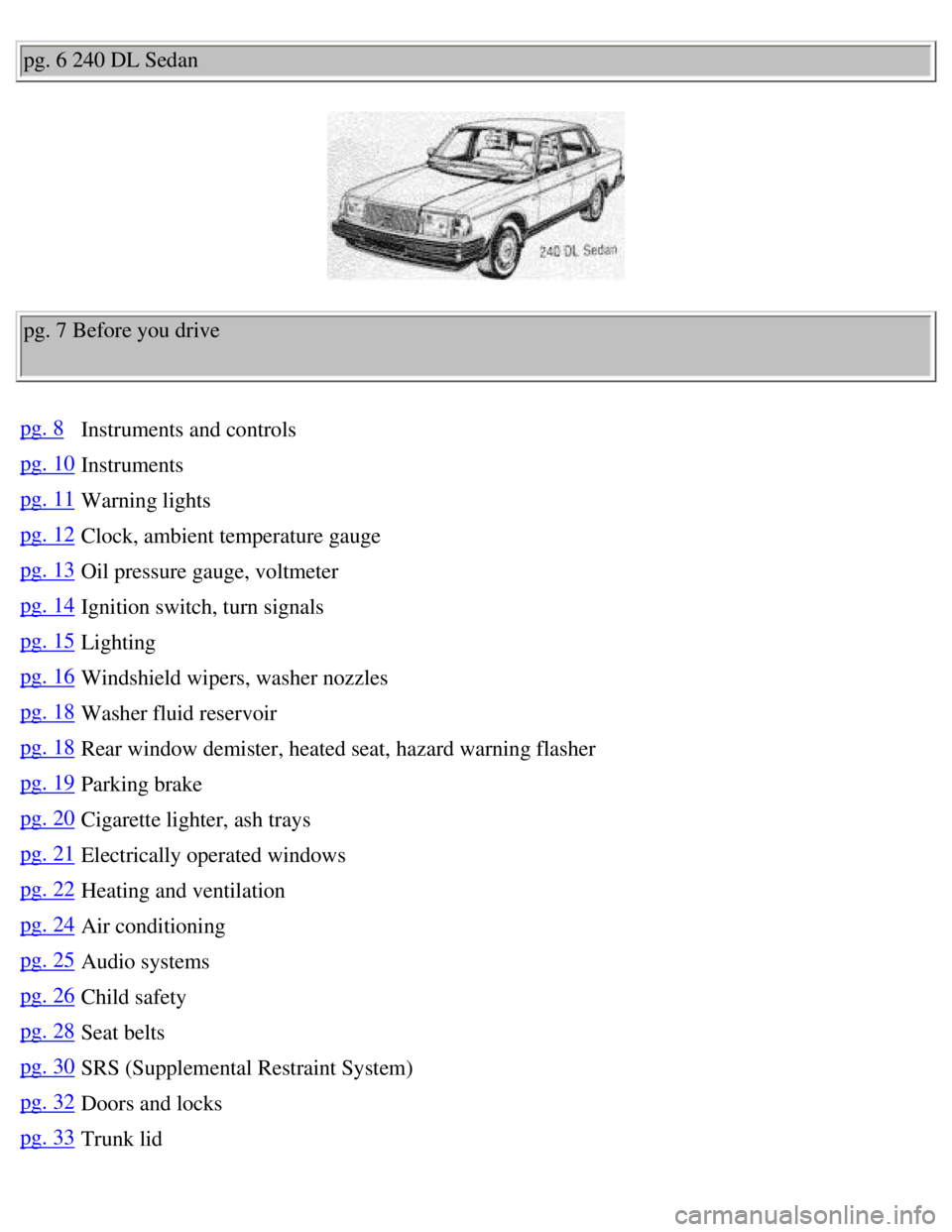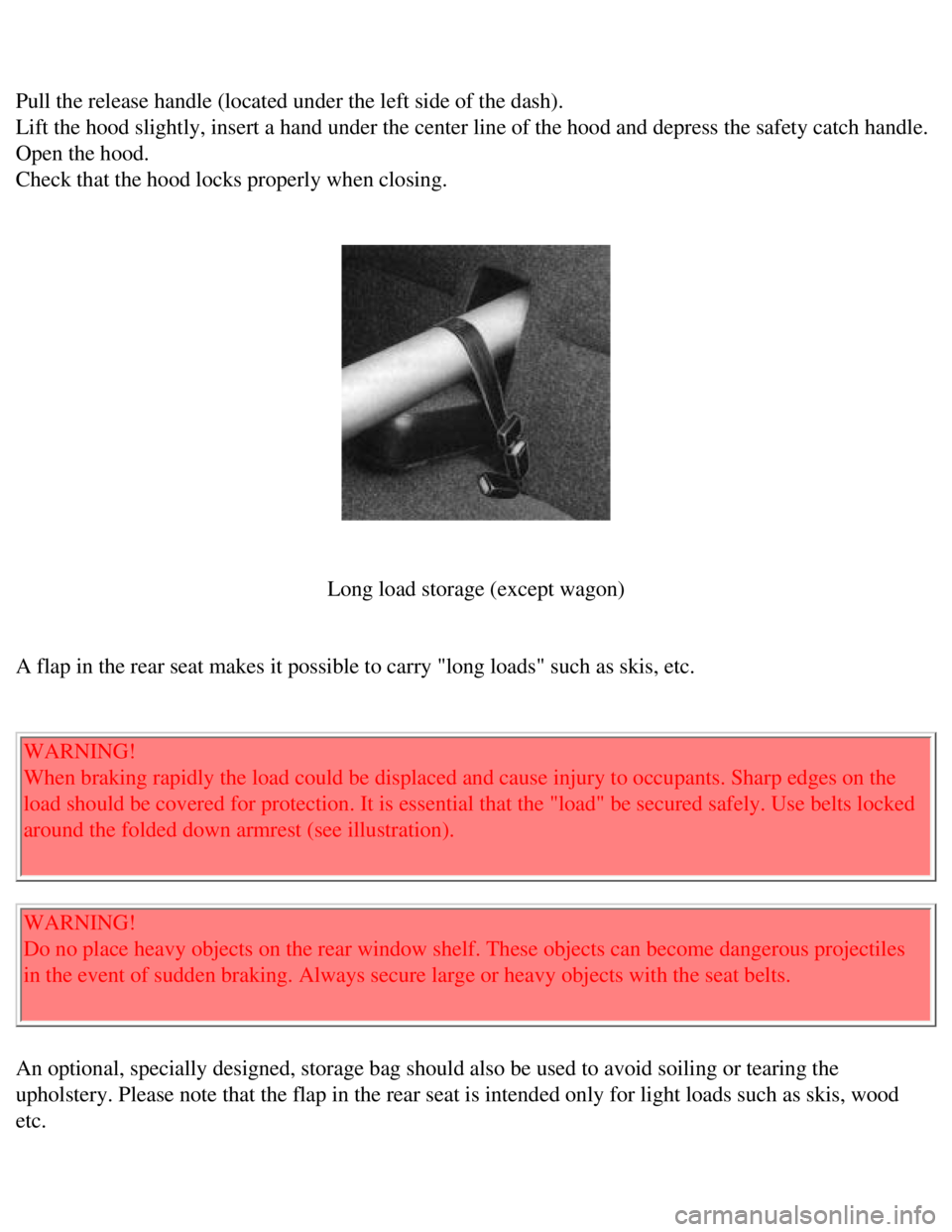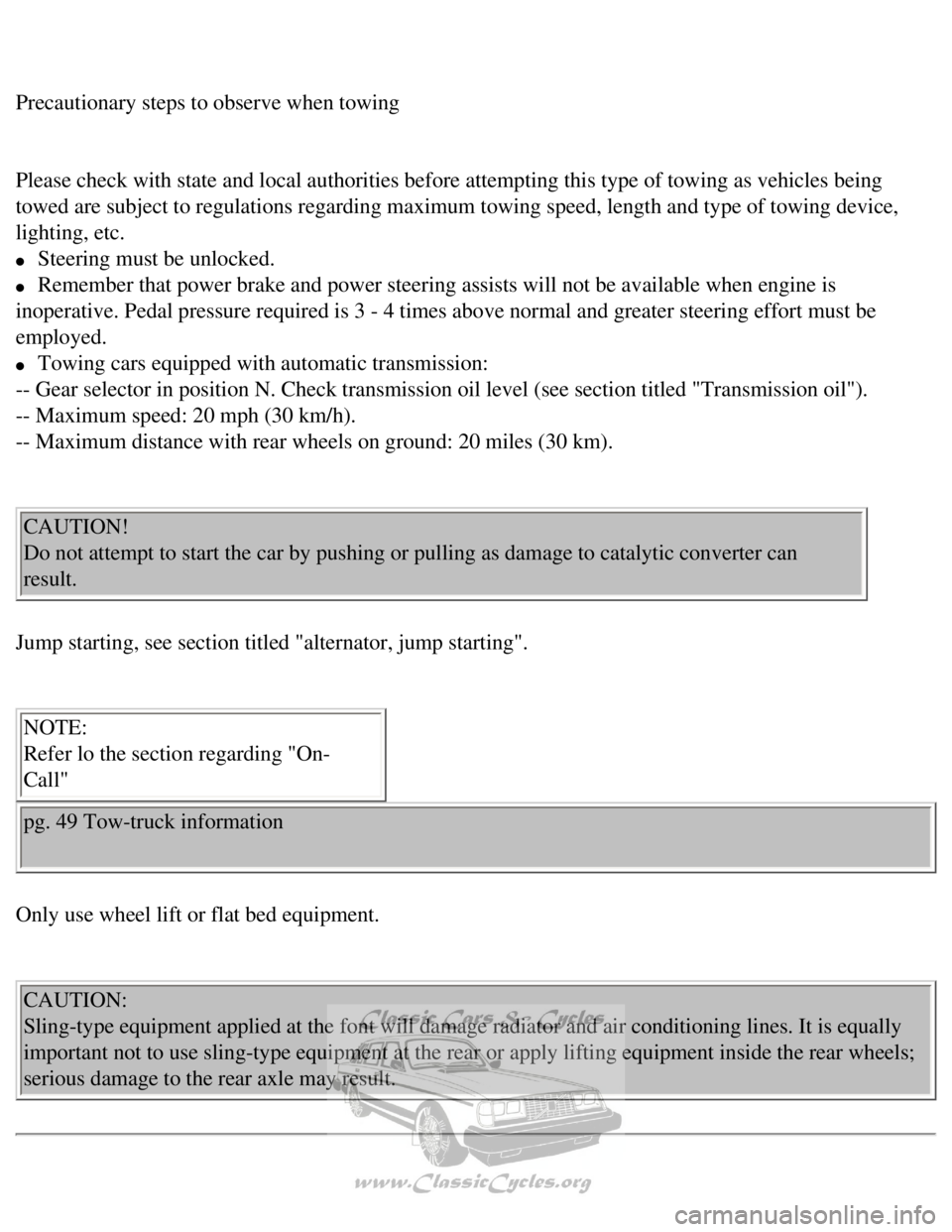1990 VOLVO 240 oil
[x] Cancel search: oilPage 5 of 143

Volvo 1990 240 Model
pg. 6 240 DL Sedan
pg. 7 Before you drive
pg. 8Instruments and controls
pg. 10Instruments
pg. 11Warning lights
pg. 12Clock, ambient temperature gauge
pg. 13Oil pressure gauge, voltmeter
pg. 14Ignition switch, turn signals
pg. 15Lighting
pg. 16Windshield wipers, washer nozzles
pg. 18Washer fluid reservoir
pg. 18Rear window demister, heated seat, hazard warning flasher
pg. 19Parking brake
pg. 20Cigarette lighter, ash trays
pg. 21Electrically operated windows
pg. 22Heating and ventilation
pg. 24Air conditioning
pg. 25Audio systems
pg. 26Child safety
pg. 28Seat belts
pg. 30SRS (Supplemental Restraint System)
pg. 32Doors and locks
pg. 33Trunk lid
file:///K|/ownersdocs/1990/1990_240/90240_01.htm (1 of 5)12/30/2006 8:\
25:01 AM
Page 8 of 143

Volvo 1990 240 Model
A Clock
B Direction indicator (green)
C Speedometer
In kilometers and miles per hour (U.S. models)
In kilometers per hour (Canadian models)
D Odometer
Total reading in miles (U.S. models)
Total reading in kilometers (Canadian models)
E Temperature gauge
The gauge pointer should remain inside the black range during normal \
operation.
If the pointer enters the red range repeatedly, check coolant level a\
nd fan belt tension. (See sections
titled "Cooling system and coolant") Warning: allow engine to cool before adding
fluid.
Do not continue to drive the car with the pointer in the red zone.
F Fuel gauge
The fuel tank capacity is approx 60 liters = 15.8 US gals. See "Fuel \
requirements".
G Clock reset knob
H Service reminder light
I Check engine (red)
J Alternator warning light (red)
K Oil pressure warning light (red)
Do not drive the car with this light on.
L SRS (Supplemental Restraint System)
M Trip odometer reset knob Push in to reset
file:///K|/ownersdocs/1990/1990_240/90240_01.htm (4 of 5)12/30/2006 8:\
25:01 AM
Page 10 of 143

Volvo 1990 240 Model
pg. 11 Warning lights
The warning lights described on this page should never be on when drivin\
g
When the ignition is turned on, and before the engine starts, all of the\
warning lights should be on to test
the function of the bulbs. Should a light not go off after the engine ha\
s started, the system indicated
should be inspected. (However, the parking brake reminder light will no\
t go off until the parking brake
is fully released.)
Alternator warning light (red)
If the light comes on while the engine is running,
check the tension of the alternator drive belt as soon
as possible. (See section titled "Cooling system".)
NOTE: This warning light is illuminated if the
alternator is not charging. However, alternator,
parking brake, brake failure, and bulb failure will
be illuminated at the same time due to the design
of the system
Parking brake reminder light (red)
This light will be on when the parking brake
(hand brake) is applied. The parking brake lever
is situated between the front seats. Canadian
models are equipped with this warning light:
Bulb failure warning light (yellow)
The light will come on if any of the following bulbs
are defective:
one of the lower beams
one of the tail lights
one of the brake lights (when the brake pedal is
depressed).
See section on "Replacing Bulbs."
Oil pressure warning light (red)
If the light comes on during driving, the oil
pressure is too low. Stop the engine immediately
and check the engine oil level. See section titled
"Engine Oil". Do not continue to drive the car
with this light on.
After hard driving, the light will come on
occasionally when the engine is idling. This is
normal, provided it goes off when the engine
speed is increased.
file:///K|/ownersdocs/1990/1990_240/90240_02.htm (1 of 4)12/30/2006 8:\
25:02 AM
Page 12 of 143

Volvo 1990 240 Model
If the light comes on (or stays on after the vehicle has started), the\
Engine Check diagnostic system has
detected a fault. Drive to an authorized Volvo dealer for inspection.
Quartz crystal clock
To reset the hands, push in the reset knob and
turn.
Ambient temp. gauge (accessory)
An electronic thermometer that indicates ambient
temperature just above the road surface. Warns you
of icy road conditions.
pg. 13 Oil pressure gauge, Voltmeter.
Oil pressure gauge (accessory)
The oil pressure gauge indicates the pressure of the
oil in the lubricating system of the engine. The
pressure is dependent on the speed of the engine,
the oil temperature and the viscosity of the oil.
Voltmeter (accessory)
The voltmeter indicates the voltage in the
electrical system and thereby also the state of the
battery. While the car is being driven the pointer
file:///K|/ownersdocs/1990/1990_240/90240_02.htm (3 of 4)12/30/2006 8:\
25:02 AM
Page 45 of 143

Volvo 1990 240 Model
Pull the release handle (located under the left side of the dash).
Lift the hood slightly, insert a hand under the center line of the hood \
and depress the safety catch handle.
Open the hood.
Check that the hood locks properly when closing.
Long load storage (except wagon)
A flap in the rear seat makes it possible to carry "long loads" such as \
skis, etc.
WARNING!
When braking rapidly the load could be displaced and cause injury to occ\
upants. Sharp edges on the
load should be covered for protection. It is essential that the "load" b\
e secured safely. Use belts locked
around the folded down armrest (see illustration).
WARNING!
Do no place heavy objects on the rear window shelf. These objects can be\
come dangerous projectiles
in the event of sudden braking. Always secure large or heavy objects wit\
h the seat belts.
An optional, specially designed, storage bag should also be used to avoi\
d soiling or tearing the
upholstery. Please note that the flap in the rear seat is intended only \
for light loads such as skis, wood
etc.
file:///K|/ownersdocs/1990/1990_240/90240_07.htm (5 of 6)12/30/2006 8:\
25:04 AM
Page 53 of 143

Volvo 1990 240 Model
To obtain best parking brake performance, the brake linings should be br\
oken in.
Stop 5-7 times from 30 mph (50 km/h), transmission in neutral, applyin\
g the parking brake with the
release button pressed in during the stop. The force must not lock the r\
ear wheels. If this happens,
release the brake enough to let the wheels rotate. Drive a mile between \
each stop to cool the brakes.
Check for proper parking brake operation.
Note: The brake lights are not illuminated when applying the parking bra\
ke. To warn traffic from
behind it is therefore advisable to depress the brake pedal slightly to \
illuminate the brake lights.
600 - 1,200 mile maintenance service
To ensure proper operation the car should be taken to a Volvo dealer bet\
ween the first 600 - 1,200 miles
(1,000 - 2,000 km) for a maintenance service. The oil in the engine, m\
anual transmission and rear axle
will then be changed. This is very important since the oil rapidly colle\
cts impurities during the break-in
period.
pg. 43 Driving economy, Shift indicator light
Economical driving does not necessarily mean driving slowly
Better driving economy may be obtained by thinking ahead, avoiding rapid\
starts and stops and
adjusting the speed of your vehicle to immediate traffic conditions. Obs\
erve the following rules:
l Bring the engine to normal operating temperature as soon as possible by \
driving with a light foot on
the accelerator pedal instead of allowing the engine to idle for a prolo\
nged period. A cold engine uses
more fuel and is subject to increased wear.
l When possible avoid using the car for driving short distances. This does\
not allow the engine to reach
normal operating temperature.
l Drive carefully and avoid rapid acceleration and hard braking.
l Do not exceed speed limit.
l Avoid carrying unnecessary items (extra load) in the car.
l Check tire pressures regularly (cold tires).
l Remove snow tires when threat of snow or ice has ended.
l Note that roof racks, ski racks, etc., increase air resistance and there\
by fuel consumption.
file:///K|/ownersdocs/1990/1990_240/90240_09.htm (3 of 6)12/30/2006 8:\
25:05 AM
Page 54 of 143

Volvo 1990 240 Model
l Avoid using automatic transmission kick-down feature unless necessary.
Other factors which decrease gas mileage are:
l Worn or dirty spark plugs
l Incorrect spark plug gap
l Dirty air filter
l Incorrect valve clearance
l Incorrect idle speed
l Dirty engine oil and clogged oil filter
l Dragging brakes
l Incorrect front end alignment
l Low tire pressure
Shift indicator light
(manual transmission models only)
The Volvo shift indicator light (S.I.L.) is a device designed to help \
you get even better gas mileage from
your Volvo car. Studies have shown that the best fuel economy is obtaine\
d by shifting gears at low
engine rpm and high relative engine load. The Volvo S.I.L. is calibrated\
to show you when to shift for
improved mileage without sacrificing smooth acceleration .
Use of the S.I.L. is simple. Shift to next higher gear as soon as the li\
ght comes on. You may find after
using the S.I.L. for some time that your natural shifting rhythm will ad\
apt to the S.I.L.'s suggestion.
Some drivers may even shift before the light comes on.
Obviously, there will be times when you need to shift later than the lig\
ht would indicate (for example,
when climbing hills or trailer towing). Using the light regularly, howe\
ver, should result in a mileage
improvement of six percent or more, depending on how you normally drive.\
Programming instructions for shift indicator
If the current supply to the control unit is cut (battery disconnected)\
, the control unit will have to be re-
programmed as the control unit memory will be erased.
Drive the car in each gear (first gear not necessary) for approximatel\
y 8 seconds.
The gear change indicator light will flicker once (0.5 seconds), as ea\
ch gear is programmed.
file:///K|/ownersdocs/1990/1990_240/90240_09.htm (4 of 6)12/30/2006 8:\
25:05 AM
Page 62 of 143

Volvo 1990 240 Model
Precautionary steps to observe when towing
Please check with state and local authorities before attempting this typ\
e of towing as vehicles being
towed are subject to regulations regarding maximum towing speed, length \
and type of towing device,
lighting, etc.
l Steering must be unlocked.
l Remember that power brake and power steering assists will not be availab\
le when engine is
inoperative. Pedal pressure required is 3 - 4 times above normal and gre\
ater steering effort must be
employed.
l Towing cars equipped with automatic transmission:
-- Gear selector in position N. Check transmission oil level (see secti\
on titled "Transmission oil").
-- Maximum speed: 20 mph (30 km/h).
-- Maximum distance with rear wheels on ground: 20 miles (30 km).
CAUTION!
Do not attempt to start the car by pushing or pulling as damage to catal\
ytic converter can
result.
Jump starting, see section titled "alternator, jump starting".
NOTE:
Refer lo the section regarding "On-
Call"
pg. 49 Tow-truck information
Only use wheel lift or flat bed equipment.
CAUTION:
Sling-type equipment applied at the font will damage radiator and air co\
nditioning lines. It is equally
important not to use sling-type equipment at the rear or apply lifting e\
quipment inside the rear wheels;
serious damage to the rear axle may result.
file:///K|/ownersdocs/1990/1990_240/90240_10.htm (6 of 7)12/30/2006 8:\
25:05 AM